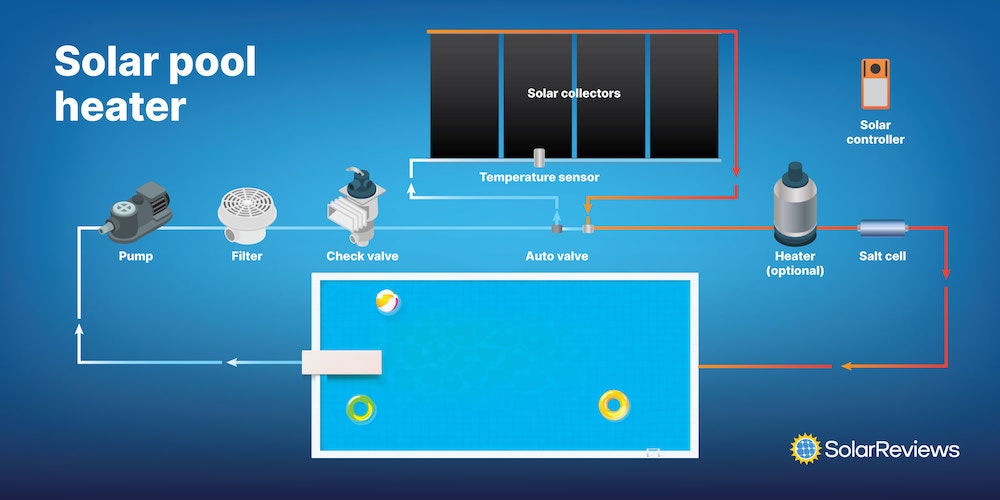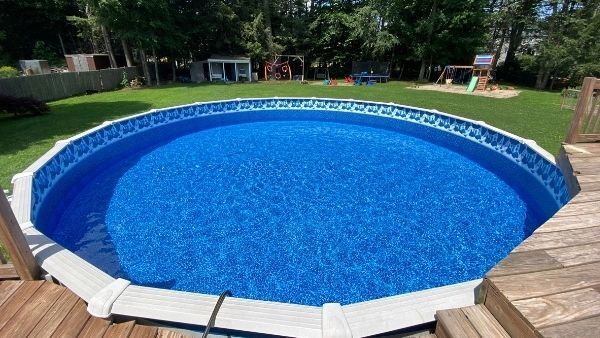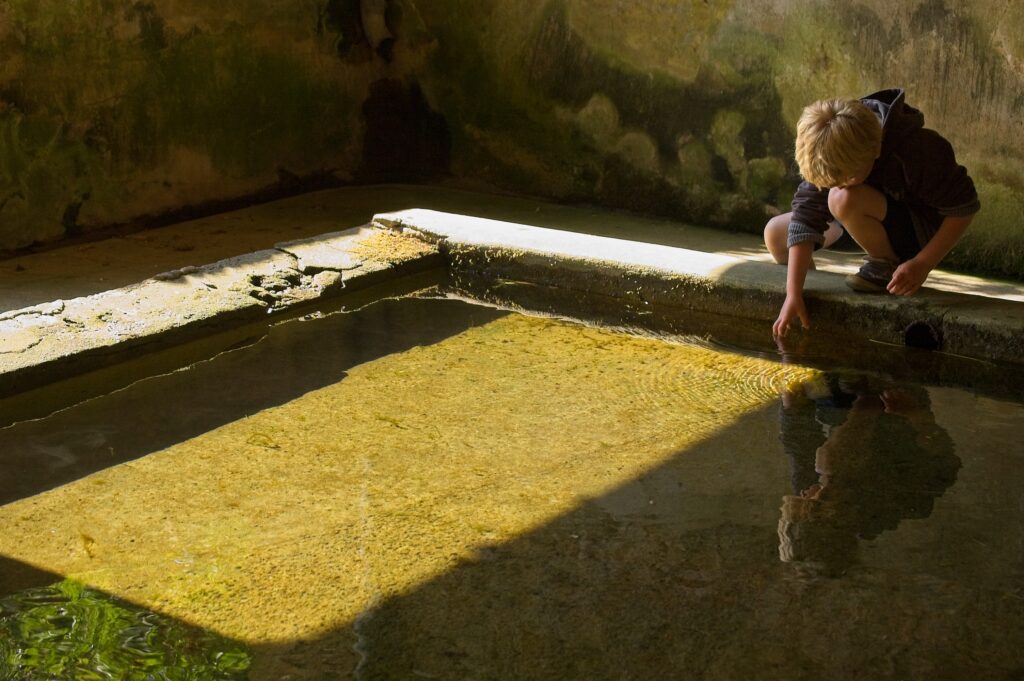Thinking about getting an above ground pool for your backyard? Wondering how deep you’ll need to dig? Look no further! In this article, we’ll explore the ideal depth for installing an above ground pool and provide you with all the information you need to create the perfect summer oasis in your own backyard. Whether you’re a seasoned pool owner or a first-time buyer, we’ve got you covered with expert advice and practical tips. Get ready to make a splash and enjoy countless hours of fun in the sun with your very own above ground pool!
Determining the Right Depth for an Above Ground Pool
When it comes to installing an above ground pool, determining the right depth is an important decision. The depth of your pool can impact not only the enjoyment and safety of your swimming experience but also the overall aesthetics and functionality of your outdoor space. There are several factors that you need to consider when deciding on the depth for your above ground pool. From local regulations to soil conditions, this article will provide you with a comprehensive guide to help you make an informed decision.
Factors to Consider
Before diving into the specific considerations for determining the depth of your above ground pool, it’s essential to understand the various factors that come into play. By taking these factors into account, you can ensure that your pool depth aligns with your needs, preferences, and budget.
Pool Type and Size
The type and size of your above ground pool are crucial factors to consider. Different pool types may require varying depths to accommodate their unique structures and functionalities. Additionally, larger pool sizes often offer more flexibility in terms of depth options.
Swimming Skill Level
The skill level of the swimmers who will be using the pool is another important consideration. If you have young children or inexperienced swimmers, a shallower depth would be more appropriate for safety reasons. On the other hand, if you have advanced swimmers in your household, you may want to consider a deeper pool to accommodate diving and more challenging water activities.
Use and Purpose
What do you plan to use the pool for? Is it primarily for recreational purposes, such as playing games and lounging in the water? Or do you intend to use it for swimming laps and exercise? Determining the primary use of your pool will help you determine the ideal depth that will cater to your specific needs.
Aesthetics
The depth of your above ground pool can significantly impact the overall aesthetics of your outdoor space. Consider how the pool will blend with the surrounding landscape and any existing structures, such as decks or patios. You may want to choose a depth that complements the overall design and ambiance of your backyard oasis.
Budget
Last but not least, your budget will inevitably play a role in determining the depth of your above ground pool. Deeper pools often require more excavation work and can be more expensive to install and maintain. It’s important to find a balance between the depth you desire and the budget you have allocated for your pool project.
This image is property of images.pexels.com.
Average Recommended Depths
Now that you have an understanding of the factors to consider, let’s explore the average recommended depths for above ground pools. These recommendations can serve as a starting point in your decision-making process.
Standard Depth Options
For most above ground pools, the standard depth options range from 48 inches to 54 inches. This depth range allows for comfortable swimming and water activities for individuals of various heights and skill levels. It also meets the safety requirements for many local regulations.
Specific Pool Activities
If you plan on using your pool for specific activities, such as diving or water aerobics, you may need to consider a deeper depth. For diving activities, a minimum depth of 7 feet is generally recommended to ensure the safety of divers. Water aerobics, on the other hand, may require a shallower depth to allow participants to touch the pool floor while performing exercises.
Safety Considerations
Safety should always be a top priority when determining the depth of your above ground pool. To ensure the safety of swimmers, it is recommended to have a designated shallow end with a depth of around 3 to 4 feet. This allows non-swimmers or weak swimmers to comfortably stand while still enjoying the pool.
Water Volume Requirements
The depth of your pool will also impact the overall water volume required to fill it. Deeper pools will naturally require more water, which can impact your water bills and ongoing maintenance costs. It’s essential to consider the water volume requirements based on the depth you choose to ensure it aligns with your budget and environmental considerations.
Local Regulations
In addition to personal preferences and needs, it’s crucial to adhere to local regulations when determining the depth of your above ground pool. These regulations vary from one jurisdiction to another, so it’s important to familiarize yourself with the specific requirements in your area.
Building Codes
Local building codes may dictate the minimum and maximum depths allowed for above ground pools. These codes are in place to ensure the safety of pool users and to regulate the construction and installation process.
Permits and Inspections
Obtaining the necessary permits and scheduling inspections is often required when installing an above ground pool. The permitting process typically includes a review of the proposed depth to ensure compliance with local regulations and safety standards.
Safety Barrier Requirements
Some jurisdictions may have specific safety barrier requirements, such as fencing or alarms, to prevent unauthorized access to the pool, particularly if it exceeds a certain depth. It’s important to be aware of these requirements to ensure the safety of both pool users and the surrounding community.
This image is property of images.pexels.com.
Soil Conditions
Understanding the soil conditions in your backyard is crucial when determining the right depth for your above ground pool. Different soil types can have varying characteristics that can impact your pool installation and long-term stability.
Soil Stability
Soil stability refers to the ability of the ground to support the weight and pressure exerted by your above ground pool. If the soil is unstable or prone to shifting, it may not be suitable for deep excavation. Consulting a professional soil engineer can help assess the stability of your soil and determine any necessary precautions or modifications.
Drainage
Proper drainage is essential to prevent water buildup around your pool and potential damage to its structure. If your soil has poor drainage capabilities, it may limit the depth options for your above ground pool. Improving drainage through techniques such as French drains or grading can help mitigate the impact of poor drainage on your pool installation.
Compaction
Ensuring proper soil compaction is crucial for the stability and longevity of your above ground pool. Compacted soil provides a solid foundation, reducing the risk of shifting or settling over time. Conducting proper soil compaction testing before installation can help identify any areas that require additional compaction efforts.
Sloping Backyards
If you have a sloping backyard, additional considerations need to be taken into account when determining the depth of your above ground pool. The slope of the ground can impact the overall stability, aesthetics, and accessibility of your pool.
Dealing with Uneven Ground
Before installing the pool, it may be necessary to level the ground to accommodate your desired pool depth. Uneven ground can create stability issues and cause the pool to look lopsided. Implementing proper leveling techniques, such as adding soil or using retaining walls, can help create a more even surface for your above ground pool.
Retaining Walls
In some cases, installing retaining walls may be necessary to create a level area for your above ground pool. Retaining walls can help stabilize the ground, prevent erosion, and create a visually appealing space. Consulting with a professional contractor or engineer can assist in designing and constructing the appropriate retaining walls for your specific backyard slope.
Leveling Techniques
Various techniques can be employed to level the ground in a sloping backyard. These include adding soil or gravel to raise the low spots or excavating and building up the high spots. It’s important to take into account the depth requirements of your pool while implementing these leveling techniques to ensure a stable and safe installation.
This image is property of images.pexels.com.
Proximity to Trees
The proximity of trees to your above ground pool can have both advantages and disadvantages. While trees can provide shade and enhance the overall ambiance, they can also present challenges that need to be considered when determining the depth of your pool.
Root Systems
The root systems of trees can extend far beyond what is visible above ground. These roots can potentially affect the stability of your pool’s foundation and surrounding structures. It’s important to understand the extent and growth pattern of the tree’s root system to avoid any root-related issues in the future.
Falling Debris
If trees are located near your pool, falling debris, such as leaves, branches, and sap, can become an ongoing maintenance challenge. It’s essential to consider the potential impact of falling debris when determining the depth of your pool. Shallow depths may result in more debris accumulation, whereas deeper pools may be less affected.
Growth and Expansion
Trees are living organisms that continue to grow and expand over time. Considering the growth potential of nearby trees is crucial to prevent any future complications with your above ground pool. Large tree roots can damage the pool structure, and overhanging branches may require regular pruning to avoid interference with the pool area.
Proximity to Underground Utilities
Another important consideration when determining the depth of your above ground pool is the proximity to any underground utilities. It is essential to avoid disturbing or damaging these utilities during the excavation process.
Electric Lines
Contacting local utility companies to identify the location and depth of any underground electrical lines is essential. Excavating near electrical lines without proper knowledge can pose significant safety risks. Understanding the clearance requirements from these lines will also impact the overall depth options for your pool.
Water Lines
Similarly, knowing the location of water lines is crucial to prevent any accidental damage during pool installation. Damaging water lines can not only disrupt your water supply but also result in costly repairs. Contacting the local water utility company to identify the location and depth of these lines is a necessary step in the planning process.
Gas Lines
If you have a gas line running through your backyard, it’s essential to identify its location and depth. Excavating near gas lines without proper precautions can lead to gas leaks and potentially hazardous situations. Consult with your local gas utility provider to ensure safe excavation practices and adherence to regulations.
Accessories and Features
In addition to the pool itself, you may also want to consider the various accessories and features that can enhance your pool experience. The depth of your pool can impact the installation and functionality of these additional elements.
Decking and Steps
If you plan on adding decking or steps around your above ground pool, the depth needs to be considered during the design phase. These features should align with the pool’s depth to provide safe and convenient access to the pool.
Ladders
The depth of your pool can also affect the selection and installation of pool ladders. Ladders should be compatible with the pool’s depth to ensure a secure and user-friendly entry and exit.
Slides and Diving Boards
For those looking to add slides or diving boards to their above ground pool, the depth must meet the safety requirements. Slides and diving boards often require minimum depths to ensure swimmers can safely use these additional features.
Safety Equipment
The depth of your above ground pool can also impact the type and effectiveness of safety equipment. This includes items such as pool alarms, safety covers, and fencing. It’s essential to choose safety equipment that is compatible with the depth of your pool to provide optimal safety for pool users.
Seasonal Considerations
Another factor that you should take into account when determining the depth for your above ground pool is the seasonal considerations specific to your location. Understanding the impact of seasonal changes on your pool can help you make an informed decision.
Factors such as temperature fluctuations, freeze-thaw cycles, and heavy rainfall can affect the performance and maintenance requirements of your pool. Consider the potential impact of these seasonal variations on the depth of your pool to ensure optimal performance and longevity.
Professional Assistance
Installing an above ground pool involves various considerations and complexities. To ensure the best outcome for your pool project, it may be beneficial to seek professional assistance.
Consulting an Expert
Consulting with a pool professional or landscape designer who specializes in above ground pool installations can provide valuable insights and guidance. They can assess your specific needs and requirements and recommend the most suitable depth for your pool based on the factors discussed in this article.
Construction and Excavation Services
If you’re not comfortable or experienced in pool installation, hiring professional construction and excavation services is a smart choice. These professionals have the expertise and equipment to handle the excavation process and ensure a seamless installation.
In conclusion, determining the right depth for your above ground pool involves careful consideration of several factors. By taking into account pool type and size, swimming skill level, use and purpose, aesthetics, and budget, you can make an informed decision that meets your unique needs. Additionally, considering local regulations, soil conditions, sloping backyards, proximity to trees and underground utilities, and the desired accessories and features will help you create a pool that is both functional and safe. Don’t hesitate to seek professional assistance throughout the process to ensure a successful and enjoyable above ground pool experience.









